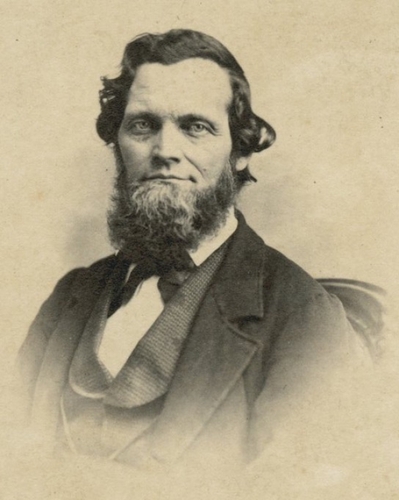BRATTLEBORO — The earliest known photographs of Brattleboro are now available for viewing on the Internet (digitalvermont.org). The Vermont Historical Society has generously digitized and web-published its collection of eight early photographs by Thomas M. Easterly of Guilford and Brattleboro, including a remarkable view of Brattleboro circa 1848.
This view, “Brattleboro, Vt., from Chesterfield Mountain, N.H.,” is not found in Before Our Time: A Pictorial Memoir of Brattleboro because it wasn't uncovered until 1984, 10 years after that very thorough book was published.
Easterly's early images, which also include one looking south along the Connecticut River and one of the Brattleboro Retreat, were daguerreotypes, the first publicly available form of photography.
Louis Daguerre introduced this type of photography to France in 1839, just nine years before Easterly took his three images of Brattleboro.
* * *
Thomas M. Easterly was born in Guilford in 1809, grew up in Brattleboro, and learned his photography skills in Albany or New York City. He gained fame for his pioneering outdoor photography, especially after he moved to the small, prospering city of Saint Louis, Missouri, in 1845. He died in that city in 1882.
The Vermont Historical Society collection originally dated the images as ca. 1845, the year Easterly moved west. The new, high-resolution scan of the Brattleboro view pushes that date forward.
The covered bridge for the Vermont Valley Railroad over the Whetstone Brook - one-third the way from the left edge - helps date the photo more precisely. The first trains came to Brattleboro on Feb. 20, 1849, so the photograph can't be much before that date.
In Dolores Ann Kilgo's biography of Easterly, Likeness and Landscape: Thomas M. Easterly and the Art of the Daguerreotype (available at Brooks Memorial Library), she notes a newspaper announcement in August 1847 that Easterly would “return east” and a later announcement in early 1848 that John Ostrander would be returning with him to Saint Louis.
There was no evidence that “east” meant “Vermont” until that Whetstone Brook railroad bridge appeared in high resolution on the web. Paul Carnahan, VHS librarian and Brattleboro native, has acknowledged that the date of the collection needs to be changed.
* * *
The earthwork of the railroad may be the only human effort in this photograph that is unchanged in 2018.
All bridges in the photo were destroyed in the Oct. 4, 1869, flood. The Main Street fire at the end of that month destroyed many of the buildings that hadn't yet been burned in another fire on Sept. 4, 1857.
The steeple of the Centre Congregational Church with Chestnut Hill in the background lets us confirm the approximate point of view of the photographer. But even that steeple has been slightly altered. In 1864, it was rebuilt onto its own foundation, about 10 feet closer to Main Street. That doesn't noticeably change the alignment with today's view.
The other steeples in the photograph - the Universalist Church on Canal Street and the Baptist Church on the corner of Church Street and Elliot Street - are long gone. All of the other old steeples that we see today are too new.
The Connecticut River Bridge location can't have changed much, although it's now probably higher up to avoid the floods that destroyed two of the bridges at that location.
* * *
The steeple, Chestnut Hill, and the Connecticut River bridge are enough to confirm the viewpoint of the c. 1848 Easterly photograph. Thomas Easterly was very close to the second hairpin turn on the Wantastiquet trail. It's much lower on the mountain than any later view, but Easterly's wooden equipment was much heavier than that used for the later views from the higher outcrops.
A careful examination of this photograph shows what Brattleboro looked like at the time that the railroad arrived in town, an event that help the town grow with new industries, residents, and tourists.
Although Bratteboro has changed significantly in 170 years, it is fascinating to see which structures are still in use today.
